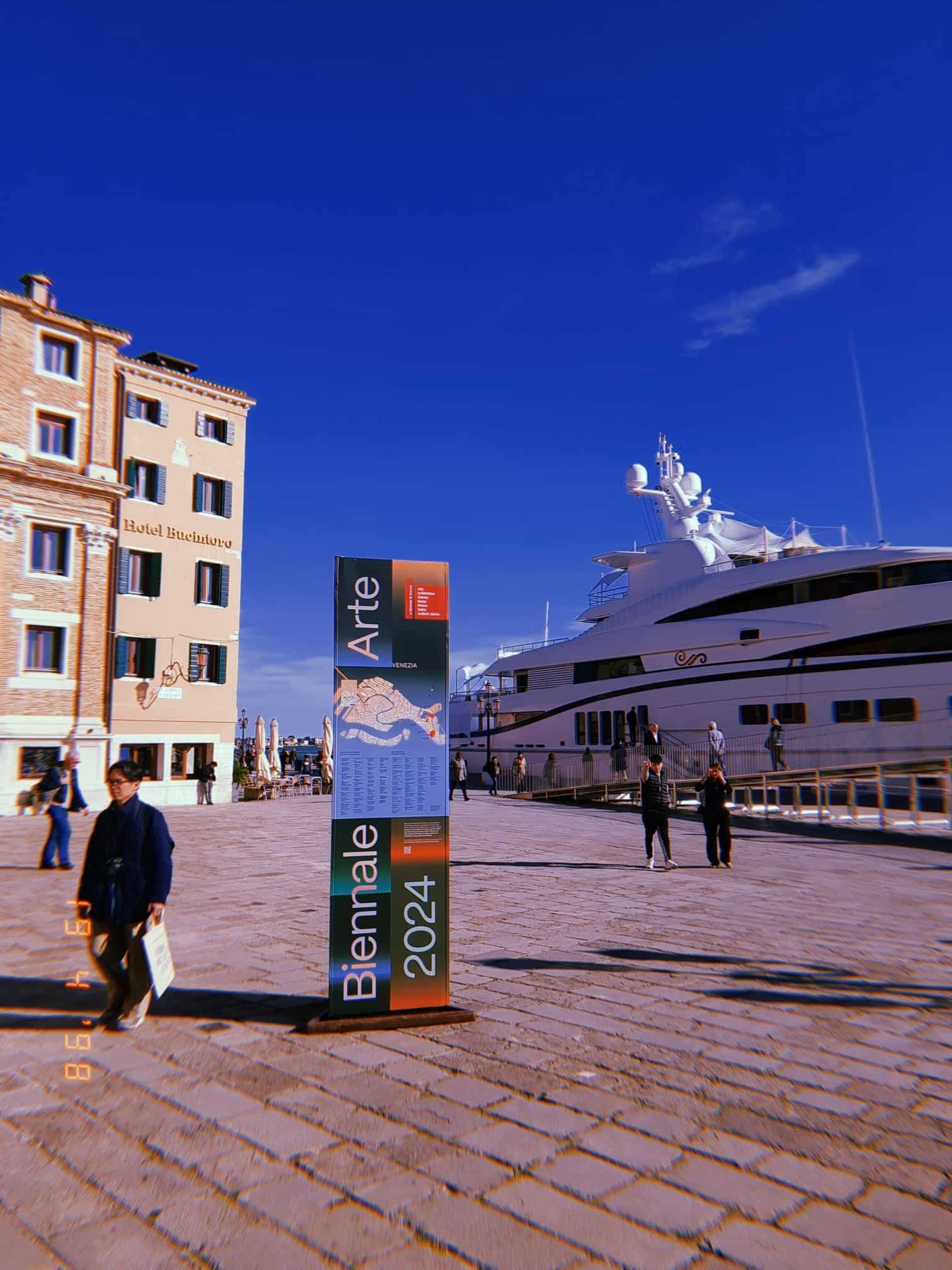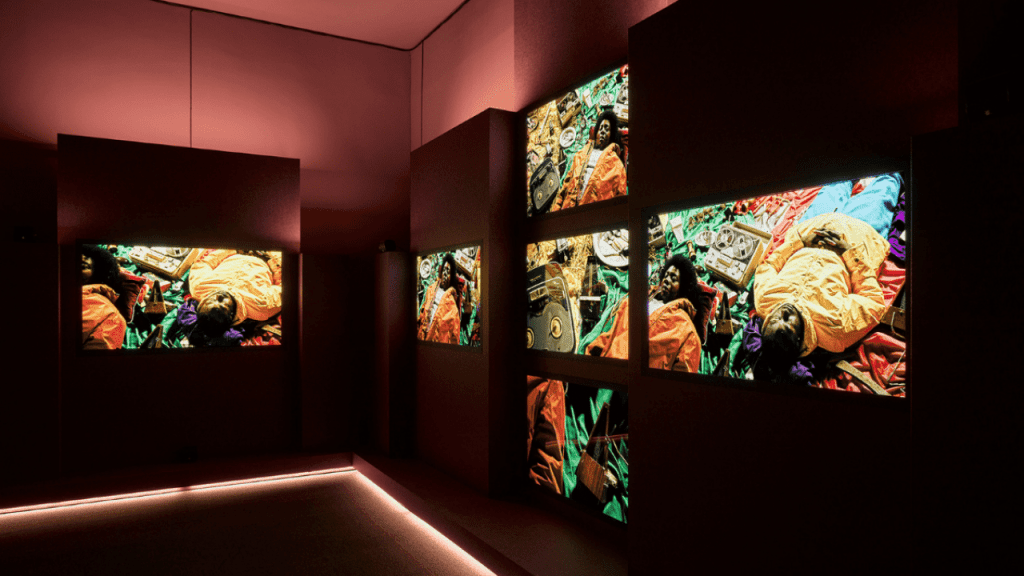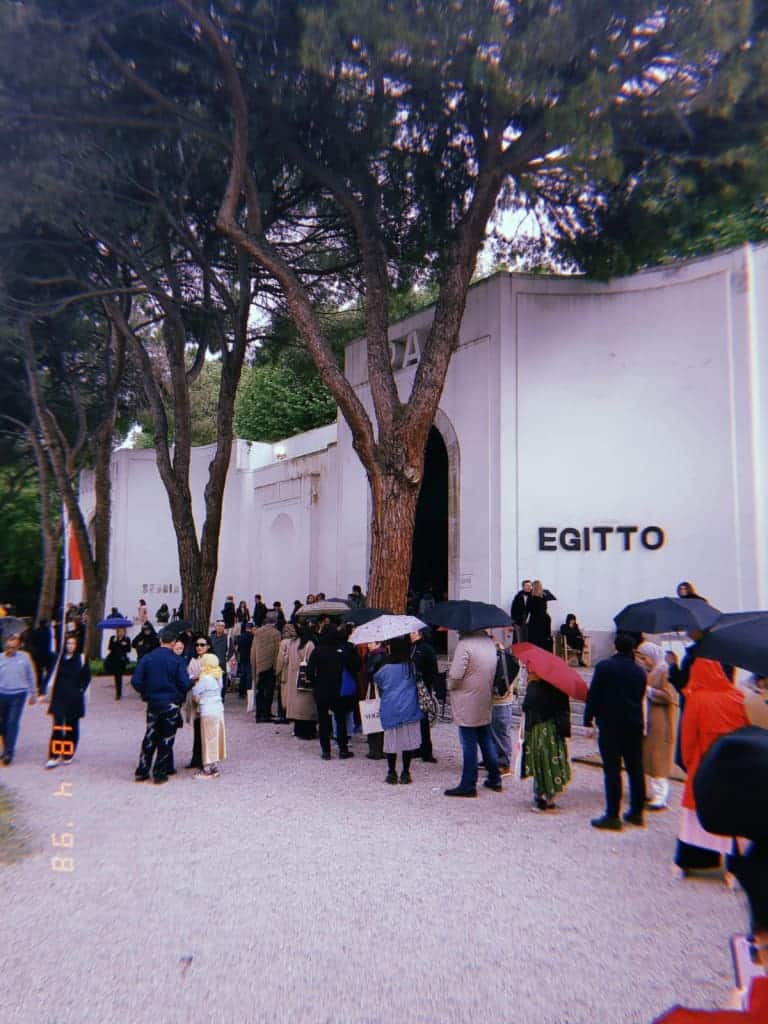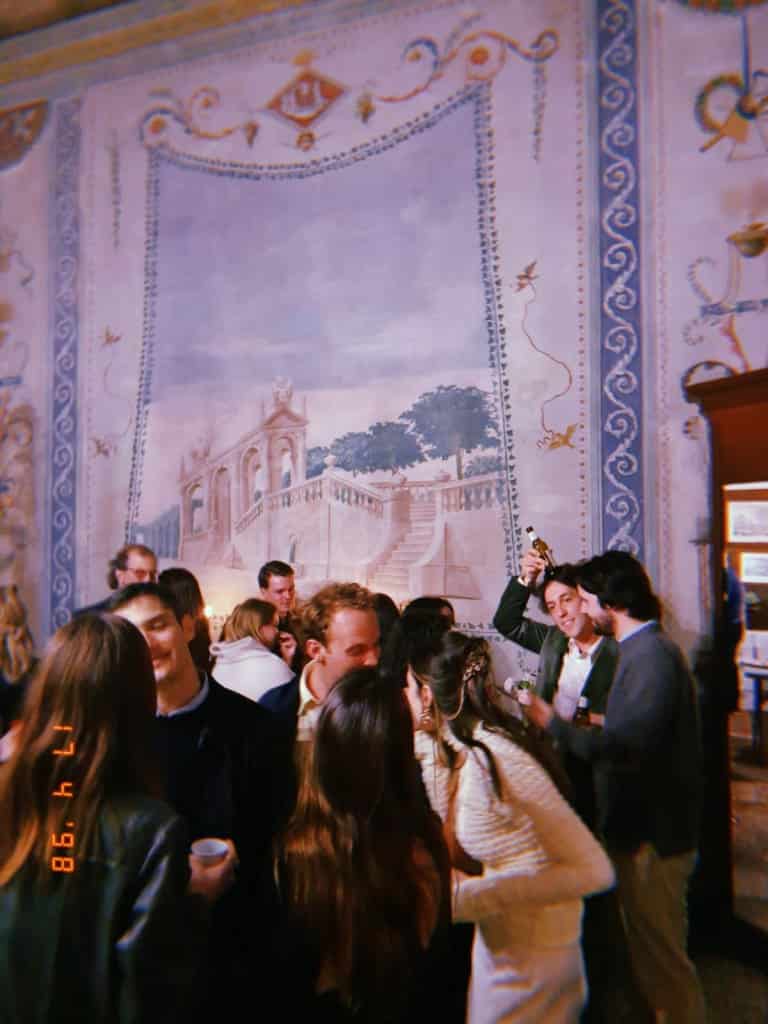
My arrival at the Venice Biennale happens before leaving British soil. Arriving at Stanstead airport at 6am (of course I am on the cheapest flight possible) I realise that the spectacle of the global artworld which takes place every other year in an ancient Italian city really begins closer to home, in the unglamorous, air-conditioned cabin of a Ryanair plane.
Sleep deprived with a suitcase in tow, in my dishevelled state it dawns on me that I am spending the journey with some of the most illustrious British art world magazine editors, broadcasters, curators and gallerists. The notable absentees are collectors, who of course would be flying private or at least Business Class.
We land in Venice Marco Polo Airport after what feels like the two longest hours of my life. After a water taxi journey through the Grand Canal, during which time I shamelessly post photos to my Instagram stories, I arrive in the neighbourhood of Dorsoduro, meeting my curator friend who has already been invited to numerous private parties that evening. Beyond the Accademia Bridge and Peggy Guggenheim Collection, the narrow, medieval alleys en route to my apartment are filling up with Balenciaga-wearing art darlings who gossip in English or French and loiter outside trattorias. Everyone is talking about the Willem de Kooning show at the Accademia, the sightings of gold-toothed Michèle Lamy and Rick Owens.
The Venice Biennale is a gargantuan display of art, featuring work by 331 artists, while some 90 nations have spent the last two years preparing their own pavilion exhibitions. The artworld equivalent of the Olympics, it feels as if every Venetian palazzo has opened its doors to celebrate; offering endless exhibitions and champagne receptions in Gatsbyesque fashion (one never quite knows who the host is).
But amid the madness I soon find one of my Biennale highlights: an unassuming show by Martha Jungwirth at Palazzo Cini. The gestural, impasto works by the Austrian artist were inspired by Joseph Conrad’s The Heart of Darkness, a late 19th-century novella about a waterboat trip through Africa, which famously offered frank reflections on the brutality of European colonial rule. It later strikes me that Jungwirth’s literary reference reverberates with the Biennale itself, as eager artworlders take over the lagoonal city, converging on fragile bridges and passing through the Grand Canal on overcrowded water taxis, which occasionally capitulate under the weight of rich collectors and dealers as captured in an iconic photograph from 2015.

As suggested by Brazilian curator Adriano Pedrosa’s concept for this year’s Biennale, ‘Foreigners-Everywhere’, the city of Venice was historically the home of indigent, nomadic merchants and migrants (Jews, Greeks and Armenians). The city’s melting pot identity led the French King Charles VIII to point out in 1495 that ‘most of their people are foreigners’. A picturesque place of cultural enlightenment and fleeting fantasy earning it the nickname ‘La Serenissima’ (the most serene), Venice later became a site of hedonistic pilgrimage for the overeducated and aristocratic tourists on their Grand Tour. Such figures indulged in the lavish lifestyle of the city, funded off the backs of colonial wealth and the shadow of slavery and racial oppression. This dynamic is appropriately alluded to in John Akomfrah’s immersive and conceptually layered Listening All Night To The Rain showing at the British pavilion in the Giardini.
But beyond being just another tourist in Venice, the Biennale’s theme of ‘Foreigners-Everywhere’ resonates with me in a different way, as somebody who feels like a tourist in the very industry I work within. As I walk past the narrow canals and gondolas, I wonder whether anybody truly feels like an insider in this global industry. The parties of the Biennale are largely hosted by billionaire collector-philanthropists and gallerists (such as Nicolas Berggruen opening his new art institute in Palazzo Diedo) who surely live in an entirely different reality, one bedecked in new season Prada and room reservations at Hotel Cipriani.
But regardless of money, access turns out to be the highest form of currency (not to mention who has access to a private speed boat). The week is characterised by Whatsapp groups blowing up with rumours of how to get on certain guest lists, speculations about which artists might be in attendance, or what DJ is playing (it turns out that the Björk rumour isn’t just a PR stunt). To get on the VIP guestlist you either have to know the right people, or strategically talk your way in after willfully losing your dignity in a mile-long queue. I mostly did the latter.

I quickly learn that the rule of thumb at the Venice Biennale is: ‘the better the cocktail party, the worse the art’. And by the second evening I find myself in a surreal situation; standing next to Swedish royalty as I stuff my face with canapés and pretend to find the art on display intriguing (the cocktails were indeed excellent). But beyond rubbing shoulders with the rich, the artworld is also shaped by impenetrable cohorts of institutional insiders and media in-crowds; lofty, well-dressed academics, sleek suited curators and slightly scruffy yet cool critics who gaggle together holding the latest issue of frieze.
In short, the Biennale opening week is an event of absolute extravaganza. Yet after 48 hours one feels positively art fatigued. One day after seeing the spectacular show by Julien Creuzet at the French pavilion, I sit on a bench to have a moment of respite and eat my lunch, before realising I had sat in the middle of a performance art piece, in which individuals clad in Lycra uttered incomprehensible sounds into confused-looking crowds. My half-eaten panino became part of the panorama. In moments like this, my enthusiasm is replaced with the existential question: What are we all really here for?
I come to the conclusion that the Biennale opening is about embracing absurdity; the sheer spectacle in which humans and art converge in an ostentatious display. This becomes a literal reality when I am introduced to one artist who explains that one of her legendary performance works involved a self-induced horse blood transfusion that nearly killed her. My existential questioning reemerges, but I repress such thoughts and respond enthusiastically, picking up another fresh glass of prosecco.

The Biennale is about the art of making an appearance as much as observing the art. The event, after all is mediated by relationships and power dynamics, both in an art historical, social and financial sense. Yet from a safe distance with sunglasses on and Campari spritz in hand, you can observe the social ecosystem with a discerning eye. In between engaging with art and trying to spot Jeffrey Deitch or Hans Ulrich Obrist, I highly recommend passing the time by playing the people watching game ‘curator, critic or collector?’ But regardless of whether we can familiarise someone’s profession by the brand of their shoe, as Pedrosa’s show states plainly, in the end we are all foreigners in Venice.
One day after seeing the spectacular show by Julien Creuzet at the French pavilion, I sit on a bench to have a moment of respite and eat my lunch, before realising I had sat in the middle of a performance art piece, in which individuals clad in Lycra uttered incomprehensible sounds into confused-looking crowds. My half-eaten panino became part of the panorama.
If you can maintain some sobriety, one learns to use inside voices at the Biennale. It is impossible not to overhear others; to bump into individuals you know, vaguely know, wish to meet, or even avoid. And when walking around the Giardini, Arsenale or nearby national pavilions, it is wise to hold your tongue when openly criticising the art, as there is a high chance that the artist or curator will be standing right behind you. In contrast, when speaking to notable art critics at VIP parties it becomes necessary to make sweeping generalisations about the show’s apparent limitations. Negativity is apparently the safest way to appear as if you know what you’re talking about (positivity is for artworld amateurs).

The lasting irony of the Biennale is that while this year’s iteration was political—highlighting themes such as the destruction of nature, indigenous oppression and decolonising the museum—the reality is that Venice is still shaped by those who regard the city as a kind of Disneyland for art, rather than an arena to sincerely engage with geopolitics (though the closure of the Israeli pavilion by the chosen artist felt like a strong, if not appropriate statement). The opening week is about immersion in opulence; an overabundance of glittering parties hosted by the cultural elite, some of whom (dare I point out) made their money from institutions that are eroding the planet. Nevertheless, Venice continues to sink beneath the weight of Aperol spritz, hors d’oeuvres and artworld fanatics.
As I arrive back at the airport, ready to finally rest on the plane back to London, to my surprise I breathe a sigh of relief to be departing. Venice is a living museum; a sight to behold, a place of beauty and wonder and history. But the social hierarchies of the Biennale quickly remind you of your own peripheral position—as an eternal outsider merely trying to get a glimpse of the illustrious inside.
As I land back in London, I enjoy the familiar sense of anonymity amid the commuter crowds of Liverpool Street Station. But inevitably, as the mundanity of everyday life returns I’ll dream of Venice.
Lydia’s exhibitions highlights
John Akomfrah, Listening All Night to the Rain, British Pavilion, Giardini
Julien Creuzet, Attila cataract your source at the feet of the green peaks will end up in the great sea blue abyss where we drowned in the tidal tears of the moon, French Pavilion, Giardini
Yu Hong, Another One Bites the Dust, Chiesetta della Misericordia, Cannaregio
Martha Jungwirth, Heart of Darkness, Palazzo Cini, Dorsoduro
Otobong Nkanga in From Ukraine: Dare to Dream, Official Collateral Event, presented by Victor Pinchuk Foundation, Palazzo Contarini Polignac, Dorsoduro


















